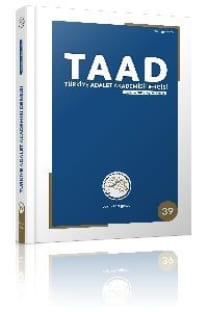Japonya’da kültür ve tabiat varlıklarının korunması
Çok farklı tarihsel ve kültürel arkaplana sahip, farklı bir coğrafyanın, farklı gelişmişlik düzeyinin, farklı ikliminde filizlenen farklı bir idare hukuku rejiminin doğurduğu bir koruma anlayışının, Japonya’da kültür varlıkları hukukuna damgasını vurduğu görülmektedir. Kültürel değerlerin yönetimi amacıyla kurulan ilk idari yapılar ve düzenleyici işlemler Meiji dönemine aittir. İlk düzenleyici işlem olarak 1871 tarihli “Antika Eşyaların Korunması” (Daijokan Fukoku) adlı kabine kararı yürürlüğe konulmuştur. 1800’lü yılların sonlarında başlayan koruma çalışmaları, İkinci Dünya Savaşı’nın hemen sonrasında hız kazanmış ve ülkenin yeniden inşası çalışmaları kapsamında kültürel varlıkların korunması konusu da yerini almıştır. Gerçekten de, Japonların kültür varlıklarının korunması alanında kayda değer bir tarihsel alt yapıya ve hali hazırda başarılı bir sisteme sahip oldukları belirtilmelidir. Japonya’da kültür varlıkları taşınır-taşınmaz varlıklar olarak ayrılmamıştır. Öte yandan, kültür ve tabiat varlıkları aynı mevzuata tabi kılınmıştır. Diğer taraftan, kültür varlıkları hukuku üzerine yapılan çalışmaların daha çok taşınır kültür varlıklarına ilişkin olduğu anlaşılmaktadır. Koruma hukukuna yönelik uygulamalar ile Japonya’nın içinde bulunduğu ekonomik durum arasında doğru orantı mevcut olduğu da ifade edilmelidir.
The protection of cultural and natural properties in Japan
A conservation approach based on different understandings of administrative law in tandem with very different historical and cultural backgrounds, different geographies, different levels of development, different environments has marked on the law of cultural property. The first administrative structures and regulations which aimed to protect cultural properties appeared in the Meiji Era. The first administrative action of significant note was the Daijokan Fukoku, the Preservation of Ancient Artifacts (Preservation of Antiquesand Ancient Goods, Cabinet Announcement 1871). The works that started to preserve the cultural properties in the late 1800s accelerated right after the Second World War. In this scope, the protection of cultural properties took its place in reconstruction of the country. In fact, it must be stated that Japanese have a significant historical background and already a successful system in preserving cultural properties. The cultural assets are not impaired as the movable-immovable propertyin Japan.The cultural and natural properties are also subject to the same regulations. In addition, in Japan, the studies on cultural property law are mostly related to movable cultural assets. It must be stated that there is a direct correlation between economic condition and practices in Japan as well.
___
- Barbara E. Thornbury: “The Cultural Properties Protection Law and Japan's Folk Performing Arts”, Asian Folklore Studies, Vol. 53, No. 2 Nazan University, 1994.
- Bryan A. Garner: “Black’s Law Dictionary, Ninth Edition, West Publishing Co. The US, 2009.
- C. Franklin Sayre: “Cultural Property Laws in India and Japan”, UCLA Law Review, February, 1986, 33 UCLA L. Rev. 851.
- Chester H. Liebs: “Listing Of Tangible Cultural Properties: Expanded Recognition For Historic Buildings In Japan”, Copyright (c) 1998 Pacific Rim Law & Policy Association Pacific Rim Law & Policy Journal, June, 1998.
- Christoph Henrichsen: “ Historical Outline of Conservation Legislation in Japan”, Hozon, Ed: Siegfried RTC Enders, Niels Gutschow, Axel Mengel ,Londra 1998.
- Geoffrey R. Scott, “The Cultural Property Laws of Japan: Social, Political and Legal Influences”, Pacific Rim Law and Policy Journal, the University of Washington, V: 12, N:2, 2003.
- Günter Nitschke: “ Protection of Urban Place in Kyoto”, Hozon, Ed: Siegfried RTC Enders, Niels Gutschow, Axel Mengel, Londra 1998.
- Hideo Fujii: “Particulars of Japan's accession to the 1970 UNESCO Convention and an outstanding problem”, Culture without Context, Issue 14, Spring 2004.
- John Henry Merryman: “Two Ways Of Thinking About Cultural Property”, The American Society of International Law American Journal of International Law, October, 1986, 80 A.J.I.L. 831.
- Katsuyuki Okamura, Akira Matsuda: “Archaelogical Heritage Management in Japan”, Cultural Heritage Management: A Global Perspective, Ed: Phyllis Mauch Messenger , George S. Smith, University Press of Florida, Gainesville, 2010.
- Lawrence W.Beer and Hiroshi Itoh: The Constitutional Case law of Japan 1970 through 1990, Washington: University of Washington Press, 1996.
- Siegfried RCT Enders: “Organization and Management of Conservation Projects in Japan”, Hozon, Ed: Siegfried RTC Enders, Niels Gutschow, Axel Mengel, Londra 1998.
- Tanaka Migaku: “In Approaches to the Archaeological Heritage: A Comparative Study of World Cultural Resource Management Systems”,New Directions in archaeology, Ed: Henry Cleere, Cambridge University Press, Cambridge, 1984.
- Tom Ginsburg: Japanese Law Symposioum: Dismantling the "Developmental State"? Administrative Procedure Reform in Japan and Korea, The American Society of Comparative Law, Inc. The American Journal of Comparative Law Fall, 2001 49 Am. J. Comp. L. 585
- Uta Hohn: “İmportant Preservation Districts for Groups of Historic Buildings”, Hozon, Ed: Siegfried RTC Enders, Niels Gutschow, Axel Mengel, Londra, 1998.
- www.accu.or.jp
- www.bunka.go.jp/english
- www.japaneselawtranslation.go.jp
- www.tobunken.go.jp
- www.unesco.org
- www.wipo.int/wipolex/en
- ISSN: 1309-6826
- Başlangıç: 2010
- Yayıncı: Türkiye Adalet Akademisi
Sayıdaki Diğer Makaleler
Arsa ve arazi takdir komisyonu kararları ve bunlara karşı dava açılması
Medenî yargılama hukukunda düzelterek onama kararı
Ceza adalet ve infaz sisteminde yaşlılık olgusuna sosyolojik bir bakış
Vehbi Kadri KAMER, Ayşe CANATA
Ekonomik esas doktrinine göre ABD vergi mahkemesi’nin stars işlemlerine bakışı
Israr kararı ve dava daireleri kurulunca bozulması üzerine verilen kararın temyizen incelenmesi
Tacirler bakımından cezai şart (ceza koşulu)
